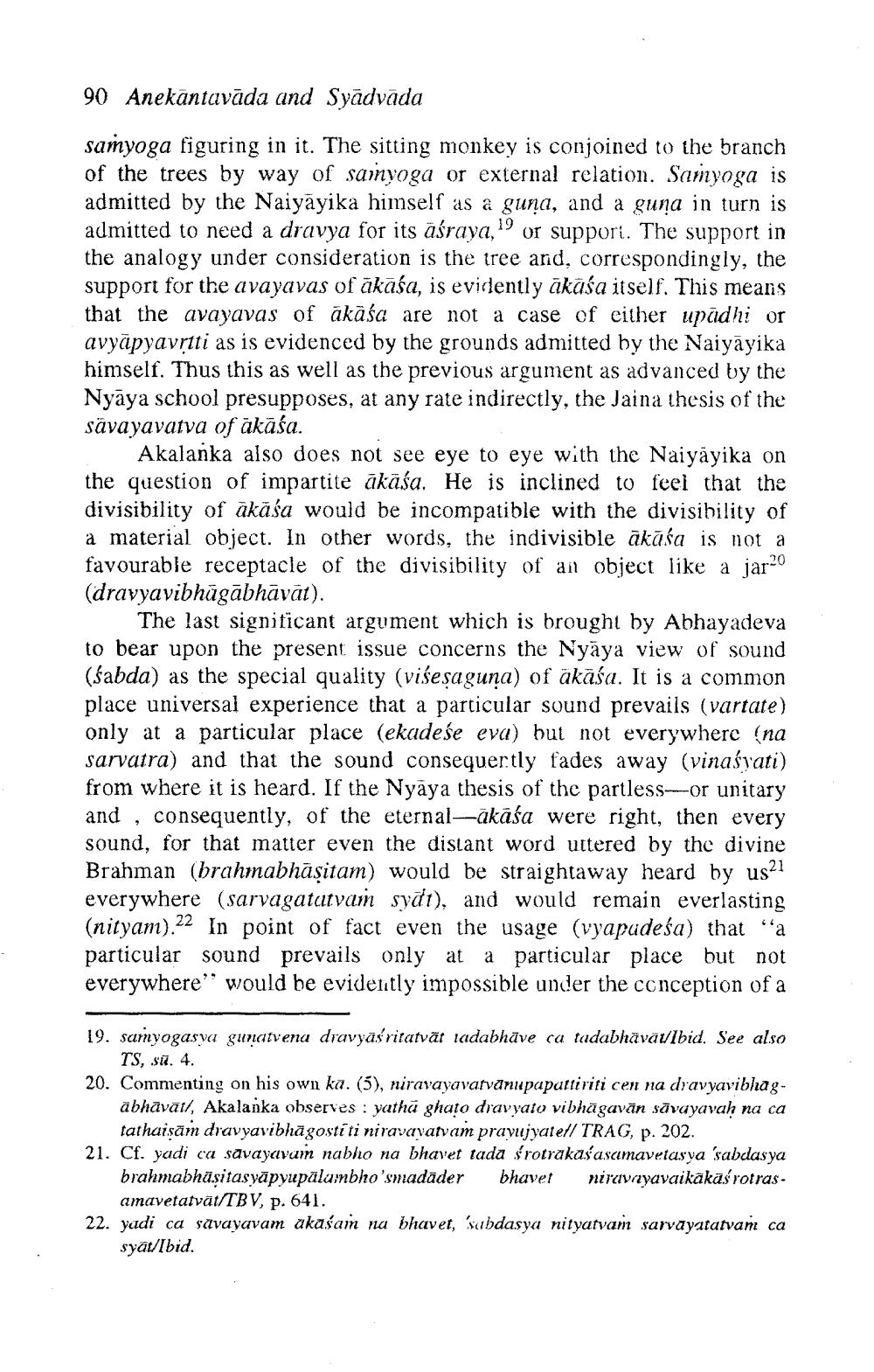________________
90 Anekantavāda and Syādvāda
samyoga figuring in it. The sitting monkey is conjoined to the branch of the trees by way of sainyoga or external relation. Samyoga is admitted by the Naiyāyika himself as a guna, and a guna in turn is admitted to need a dravya for its āśraya,' or suppori. The support in the analogy under consideration is the tree and, correspondingly, the support for the avayavas of ākāśa, is evidently äkāśa itself. This means that the avayavas of akāśa are not a case of either upādhi or avyāpyavrtti as is evidenced by the grounds admitted by the Naiyāyika himself. Thus this as well as the previous argument as advanced by the Nyāya school presupposes, at any rate indirectly, the Jaina thesis of the sävayavatva of ākāśa.
Akalanka also does not see eye to eye with the Naiyäyika on the question of impartite ākāśa. He is inclined to feel that the divisibility of ākāśa would be incompatible with the divisibility of a material object. In other words, the indivisible ākāśa is not a favourable receptacle of the divisibility of air object like a jar20 (dravyavibhāgābhāvāt).
The last significant argument which is brought by Abhayadeva to bear upon the present issue concerns the Nyāya view of sound (śabda) as the special quality (visesa guna) of akāśa. It is a common place universal experience that a particular sound prevails only at a particular place (ekadese eva) but not everywhere (na sarvatra) and that the sound conseguertly fades away (vinaśvati) from where it is heard. If the Nyāya thesis of the partless--or unitary and, consequently, of the eternal_ākāśa were right, then every sound, for that matter even the distant word uttered by the divine Brahman (brahmabhāșitam) would be straightaway heard by us21 everywhere (sarvagatatvam sydı), and would remain everlasting (nityanı).22 In point of fact even the usage (vyapudeśa) that "a particular sound prevails only at a particular place but not everywhere”' would be evidently impossible under the conception of a
19. samyogasya gunatvena dravyās ritatvät ladabhāve ca tadabhāvad/Ibid. See also
TS, Sü. 4. 20. Commenting on his own ka.(5), niravayavatvanupapattiriti cen na dravyavibhag
abhāvātl, Akalanka observes : yathả ghato dravyato vibhāgavän sävayavah na ca
tathaisām dravyavibhāgostiti niravavatvam pravujyatell TRAG, p. 202. 21. Cf. yadi ca savayavain nabho na bhavet tada śrotrakasasamavetasya 'sabdasya
brahmabhasitasyāpyupälambho'smadăder bhavet niraviyavaikakaś rotras
amavetatvāt/TBV, p. 641. 22. yadi ca savayavam akaśam na bhavet, subdasya nityatvam sarvayatatvam ca
syät/Ibid.




